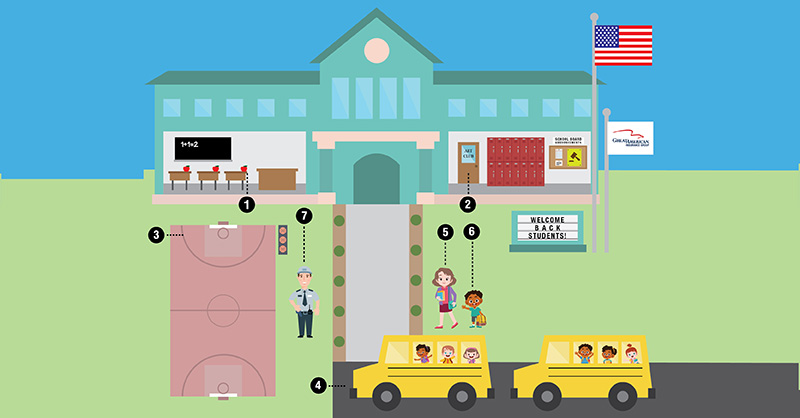Be Prepared To Address Students of Concern

Developing a Threat Assessment Model
The goal of a threat assessment is to identify students of concern, assess their risk for engaging in violence and identify intervention strategies to manage that risk.
In the wake of continuing school shootings, the United States Secret Service published its Enhancing School Safety Using a Threat Assessment Model guide. This guides urges school districts to take major steps in developing a threat assessment model that prevents school violence.
In conjunction with physical security and emergency plans, a threat assessment helps school staff recognize students that may engage in concerning behaviors that require intervention. The goal of the threat assessment model is that:
- Students feel empowered to come forward without fear of reprisal; and
- Faculty and staff take all incoming reports seriously and assess any information on concerning behavior or statements.
Threat assessment models gives schools the needed tools to identify and support individuals who may engage in a wide range of violence against themselves or others. This violence can include self-harm like cutting or suicide, risk-taking behaviors, substance abuse, assaults, and other forms of violence against others.
A threat assessment is different from a vulnerability assessment
A vulnerability assessment (sometimes called a site survey or security audit) deals with things, not people. It focuses on the facility, policies and procedures, and not individuals. A vulnerability assessment should be scheduled and conducted on a periodic basis to examine the security of the physical plant, the daily operational practices, and to detect potential vulnerabilities or risks.
A threat assessment, on the other hand, is about people, specifically individuals of concern. It cannot be scheduled, but rather must occur whenever a threat is received. It focuses on a specific individual, the threats they have made or pose, and the development of a plan for management. While vulnerability assessments and threat assessment management have different purposes and mechanisms, both are critical to ensure a safer school.
The Enhancing School Safety Using a Threat Assessment Model guide outlines the following recommended steps for creating a plan.
- Step 1 – Establish a multi-disciplinary “threat” assessment team
Does your current safety committee include what is recommended in the model or can improvements be made? Should you create a separate team to address these needs?
- Step 2 – Define prohibited and concerning behaviors
Does your current safety committee include what is recommended in the model or can improvements be made? Should you create a separate team to address these needs?
- Step 3 – Create a central reporting mechanism
Is there currently an online reporting form on the school website, a dedicated email address or phone number to accept threat reports, or other mechanisms available for students to report threatening or risky behavior? There should be a means for students to anonymously report suspicious or concerning activity without fear of retribution. Once a student or staff member makes a report, the threat assessment team should evaluate and respond to it.
Great American Insurance Group offers the STOPit program to our education customers, which may be a way to establish this reporting mechanism. For more information, visit STOPit’s website.
Great American Insurance Group offers the STOPit program to our education customers, which may be a way to establish this reporting mechanism. For more information, visit STOPit’s website.
- Step 4 – Determine the threshold for law enforcement intervention
- When questionable behavior is reported or found, are there guidelines in place to determine when the school and parents can handle the situation versus when law enforcement should be notified?
- Step 5 – Establish assessment procedures
- Does your team have clearly defined processes and procedures for investigating concerns? Is an investigation thoroughly documented? The model provides details in Step 5 to help the team determine whether the student is at risk for engaging in violence.
- Step 6 – Develop risk management options
- Are the strategies in place to reduce the student’s risk for engaging in violence and make a positive outcome more likely? Remember, simply removing the student from school does not eliminate the risk to the school community.
- Step 7 – Create and promote safe school climates
- Positive school climates are built on a culture of safety, respect, trust, and social and emotional support, and when students feel connected to their school, classmates and teachers. Using student and teacher surveys can help to confirm that assumption or proactively find areas of improvement.
- Step 8 – Conduct training for all stakeholders
- Are staff, students and parents trained on how to identify concerning behaviors and where to report it? Students should be made aware that reports can be anonymous and that their report could help save a friend who is struggling.














